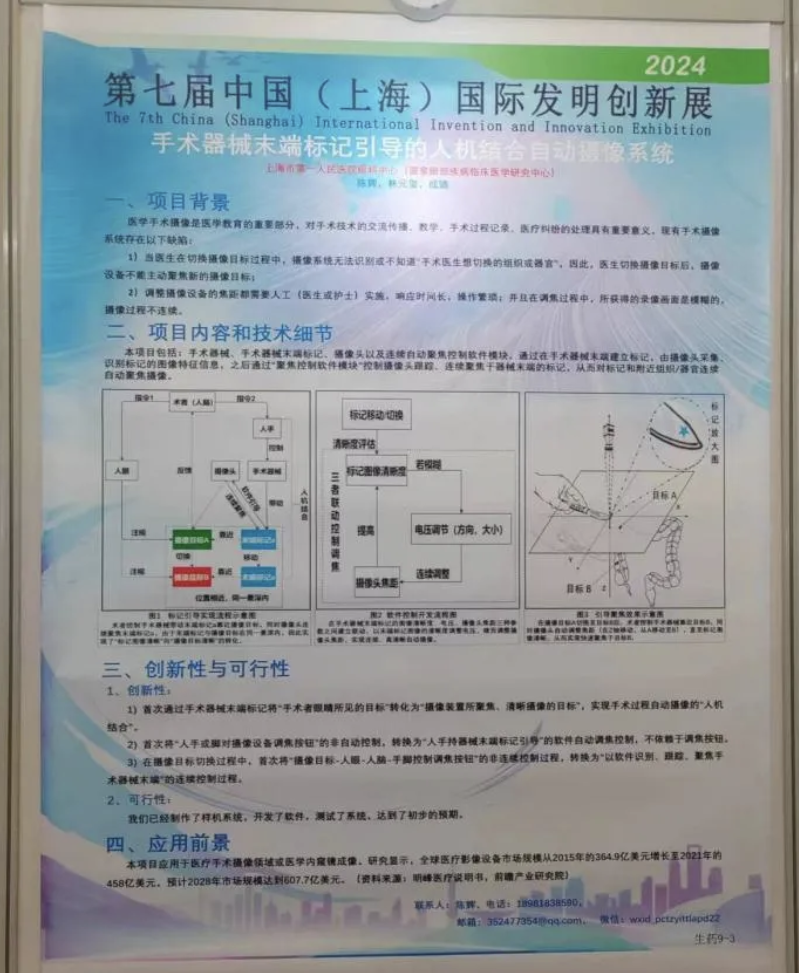- News
Silver Medal Awarded to Professor Hui Chen 's Ophthalmology Team at Shanghai General Hospital in the 7th China (Shanghai) International Invention and Innovation Exhibition
我院眼科中心陈辉主任团队在第七届中国(上海)国际发明创新展览会中荣获银奖
The 7th China (Shanghai) International Invention and Innovation Expo was successfully held from June 12 to 14, 2024, at the Shanghai World Expo Exhibition and Convention Center. As an integral part of the Shanghai International Technology Fair, this year's expo was themed "Invention and Creation: Shaping the Future." The event showcased over 700 innovative inventions and achievements from mainland China, Hong Kong, Macau, Taiwan, Poland, Romania, Thailand, and other countries and regions. These exhibits highlighted the latest advancements in high-tech fields such as digital technology, biomedical science, and low-carbon energy, reflecting inventors' recent focus in these areas.
At this exhibition, the technology transfer project "Human-Machine Combined Automatic Imaging System Guided by Surgical Instrument Tip Marking," led by Professor Hui Chen of the Orbital Disease and Ophthalmic Plastic Surgery Subspecialty at the Ophthalmology Center of Shanghai General Hospital, was recommended by the Biomedical Professional Committee of the Shanghai Invention Association and awarded the silver medal.


The current surgical imaging system at Shanghai General Hospital has the following deficiencies:
1. During the process of switching imaging targets, the system is unable to recognize or understand the tissue or organ that the surgeon intends to switch to. As a result, after the surgeon switches the imaging target, the imaging equipment cannot automatically focus on the new target.
2. Adjusting the focus of the imaging equipment requires manual intervention by the surgeon or nurse, which is time-consuming and cumbersome.
3. Due to the manual adjustment of focus, the recorded images are blurred, and the imaging process lacks continuity.
This project aims to address these issues by establishing "markers" at the ends of surgical instruments. These markers are identified by specially developed software, which then controls the zoom camera to focus and track the markers. This approach enables high-definition imaging of the tissues or organs in proximity to the markers.
According to the team led by Professor Hui Chen, the project offers the following innovations compared to traditional techniques:
1. For the first time, it transforms the "gaze point of the human eye" into the "marker point at the end of the handheld surgical instrument." By using the markers, it converts the "direction indicated by the instrument's end" into the "target that the imaging device focuses on and captures clearly," achieving an automatic imaging process that integrates human and machine input.
2. For the first time, it replaces the manual control of focus buttons with software that automatically adjusts the focus based on the markers at the ends of handheld instruments, eliminating reliance on manual focus buttons.
3. During the process of switching imaging targets, it replaces the non-continuous control process of "imaging target-human eye-human brain-hand/foot control of focus buttons" with a continuous control process of "software identification, tracking, and focusing on the surgical instrument's end."
The team led by Professor Hui Chen at Shanghai General Hospital has successfully developed a prototype, which has demonstrated excellent test results. This prototype enables continuous automatic focusing throughout the entire process.
The outcomes of this project are currently applicable to headlamp imaging systems in fields such as plastic surgery, dentistry, and cardiac surgery. In the future, it could be integrated with endoscopic systems, making it widely applicable in endoscopic surgeries within otolaryngology and neurosurgery.

